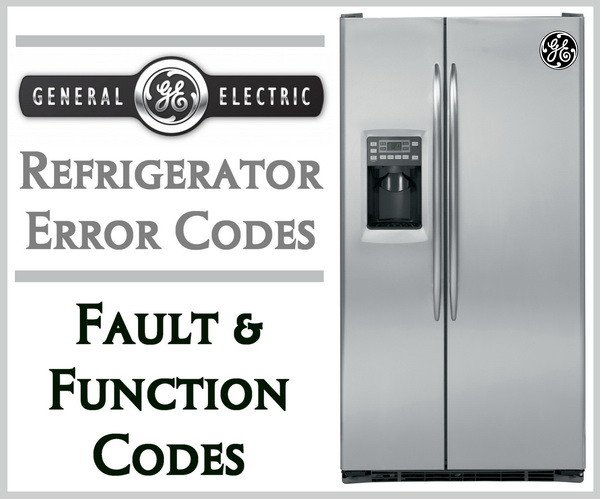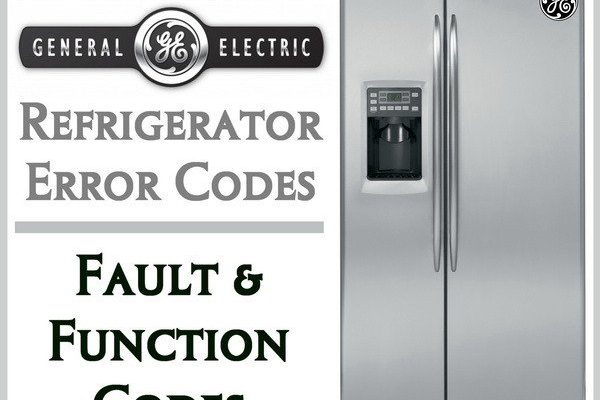
Now, before you start panicking about whether you’ll have to call a repair technician or, worse, replace your fridge, take a deep breath. We’re here to break it down for you. Understanding these error codes is a bit like speaking a language that only appliances understand. Once you understand what your fridge is trying to communicate, resolving the issue might be simpler than you’d think.
What Does Error Code F2 Mean?
When your GE refrigerator flashes error code F2, it’s a sign that something’s off with its cooling mechanisms. Think of your refrigerator as a mini climate control system. It’s like a small city that has to maintain its temperature perfectly to keep your food fresh. So when there’s a hitch in this system, an error code is thrown, much like a traffic light turning red when there’s a problem ahead.
The F2 code commonly reveals issues with the temperature sensor. You can think of this sensor as the brain of your fridge’s cooling system — it keeps track of the temperature and sends signals to adjust it as needed. If it’s not working properly, your fridge might not cool as it should, leading to that pesky error message. This error can also occur if there’s a problem with the control board’s circuit, the piece that processes signals from the sensor and orchestrates the cooling process.
The good news is, even if you aren’t a tech wizard, understanding this is like knowing that a fever indicates something’s amiss in the body. It’s a starting point for problem-solving. All you need is a little guidance to get it fixed, and your trusty fridge will be back on track.
Possible Causes of the F2 Error
Alright, let’s dig into what might cause this F2 problem. First off, one major culprit could be a malfunctioning temperature sensor. This little gadget measures the internal temperature and tells the control board what’s going on. Imagine it like a weather app for your fridge. If it’s faulty, it might be giving the wrong reading, making the system respond inappropriately.
Another possible reason could be a failure in the main control board. The control board is like the airport tower guiding all your fridge’s functions. If there’s a glitch here, the signals between the temperature sensor and cooling system might get scrambled, leading to an incorrect diagnosis and, consequently, the F2 error.
Lastly, poor wiring connections can also be the root of the problem. Just like how a loose connection in your home’s wiring can cause the lights to flicker, if the wires connecting the sensor and control board are compromised, it could trigger the error code. It’s a bit like how a bad phone connection can lead to mixed messages.
Once you’ve identified these factors, it’s easier to know where to focus your troubleshooting efforts. It’s all about narrowing down the possibilities and tackling them one by one.
How to Fix the F2 Error
Okay, let’s roll up our sleeves and see how we can fix this. Start by checking the temperature sensor. Locate it inside your fridge — usually, it’s near the back wall. Ensure it’s not blocked by food items or ice build-up, which could give it false readings. Just like clearing a pathway, making sure it’s unobstructed might clear up the error.
If that doesn’t do the trick, it’s time to examine the control board. You might need to carefully remove it and check for visible signs of damage, such as burn marks or broken components. It’s like inspecting a circuit breaker to ensure everything’s in order. While inspecting, make sure all connections are secure and nothing’s out of place.
Finally, if you’ve checked these components and the issue persists, it might be time to consult the user manual or reach out for professional help. Sometimes, when our DIY efforts don’t pan out, getting expert advice is the best way forward. Remember, it’s better to call in the experts than risk further complications.
Preventative Measures
Now that you’ve got a grasp on what’s happening, let’s talk about how to prevent it from happening again. Regular maintenance goes a long way in keeping error codes at bay. This means ensuring your refrigerator’s vents aren’t blocked. Think of it like keeping your workspace tidy for optimal productivity.
Also, periodically check that the temperature sensor and control board connections are secure, much like you’d routinely check your car’s oil levels. Keeping these in check can prevent those annoying error codes from springing up unexpectedly.
In the end, touching base with your refrigerator now and then can help it continue running smoothly. And, if an error code like F2 decides to show up again, you’ll know exactly what to do. Your fridge — and your food — will thank you!
